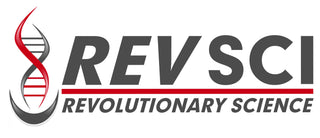Revolutionary Science has been manufacturing low-cost, high powered micro centrifuges since 1999. The RevSpin microcentrifuges are an excellent choice for DNA extraction or protein purification, do to their high RPM and g-force capabilities and competitive price. Sample content separation is achieved quickly. The RevSpin 102 is a low cost 2 speed unit with a 10,000 RPM maximum speed. The digital versatile RevSpin 200 reaches a higher RPM of 11,000, but will also go slow enough to spin down eukaryote cells without rupturing the cell membranes. The RevSpin microcentrifuges are an excellent choice for anyone performing biotech and microbiology applications. The RevSpin 102 was featured in the forensics crime lab on the popular TV Show, CSI Miami.
Microcentrifuges
Microcentrifuges
Area of Focus
Molecular Biology
Forensics
Biotechnology
General lab use
Applications
Cell pelleting
Quick spin-downs
Microfiltration
HPLC protocols
PCR sample prep
DNA extractions
Protein purification
Stem cell extraction from blood
Urine microscopic analysis
Transform bacterial DNA through methods using heat shock and recombination
Bacterial (prokaryotic) chromosomes are in the form of hoops and circles and are far smaller than eukaryotic chromosomes. By forcing a plasmid (circular strand of foreign DNA) to enter a bacterial cell, the plasmid can merge into the chromosome can be change the DNA. This process is called transformation. Bacterial cells and the plasmid of interest can be stored in a warm environment (most likely at 37C). A solution can be stored in a Revolutionary Science Incufridge and Poly Pro Bath. During this incubation period, the cell walls become porous and allow the plasmid to enter. Solution can then be transferred to a water bath at 42 degrees Celsius. The abrupt change in temperature will “heat shock” the solution. When the cell is exposed to the elevated temperature, the lipid membrane closes and holds in the plasmid, allowing it to insert itself into the chromosome and reprogram it. Bacterial cells can be inoculated on a petri plate, incubated in an incubator, where colony forming units (CFU’s) can be counted either by hand or with an automated colony counter, like the IncuCount. Aseptic techniques should be employed. Petri plates should be properly disposed of after they are no longer needed, by sterilizing in an autoclave, like the Saniclave 50.
Isolate and extract DNA from crude samples for analysis
Prior to amplification or analysis of DNA, the DNA must be extracted from the tissue sample. A small tissue sample of an organism can be ground and pulverized by hand using a pestle and a micro centrifuge tube. This pulverized sample is now referred to as the crude sample. This process continues by rupturing and denaturing the cell wall (composed of a lipid membrane and proteins), called lysing. Cells are lysed with lysis solution and exposed to elevated temperatures in two water baths, like the Poly Pro Bath or Dual Poly Pro Bath. A micro centrifuge, like a RevSpin and vortexer are also used in the process to remove the lipids and proteins from the mixture. When the process is complete, the DNA chromosomes can be viewed under a microscope and is ready to be amplified in a PCR machine like the RevCycler or analyzed through DNA electrophoresis in a DNA RevBox or even sequenced.
Purify proteins from crude samples
Prior to analysis of proteins by means of protein electrophoresis or spectrophotometry, the DNA and lipids must be removed from the tissue sample. A small tissue sample of an organism can be ground and pulverized by hand using a pestle and a micro centrifuge tube. This pulverized sample is now referred to as the crude sample. This process continues by rupturing and denaturing the cell (composed of DNA, carbohydrates, lipid membrane and proteins) is called lysing. Cells are lysed with lysis solution and exposed to elevated temperatures in two water baths, like the Poly Pro Bath or Dual Poly Pro Bath. A micro centrifuge, like a RevSpin and vortexer are also used in the process to remove the lipids, sugars and DNA from the mixture. When the process is complete, the proteins remain. Proteins, depending on their abundance can be analyzed through protein electrophoresis in a Protein RevBox, spectrophotometry or even liquid chromatography and mass spectrometry.
